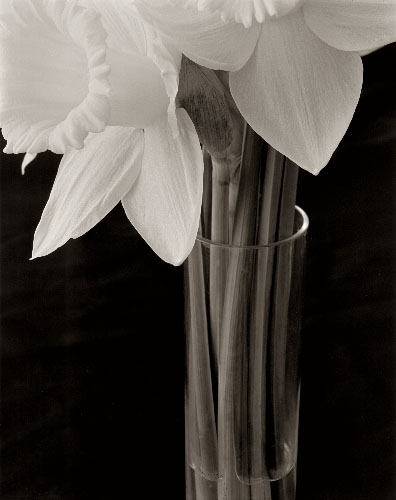In this thread on TMAX film, it was pointed out that one of my photos showed a nice control of tones, and I was asked twice to discuss my scanning method in detail.
My scanning method is pretty much like everyone else's - and like the rest of us, I only show the photos that look nice, and toss out the duds.
My teacher imparted two basic lessons to which I have always returned. They are really two sides of the same coin. One is: observe how tones change, depending on neighboring tones. The other is: find the most visually delightful part of the image, and don't bother to photograph the rest.
Here is an example of the first principle.
The original photo:
A modified photo: In Photoshop, I selected the background shade, and lightened it to something else. Nothing else has changed. Please overlook my clumsy use of the "magic wand" tool.
Now the flowers look much more dull. No burning or dodging. No adjustment curves. The whole photo is just... blah.
I don't own any lights: I shoot next to the dining room window, and in this image, you can tell that the light is pretty mediocre... or is it ?





 Reply With Quote
Reply With Quote




Bookmarks